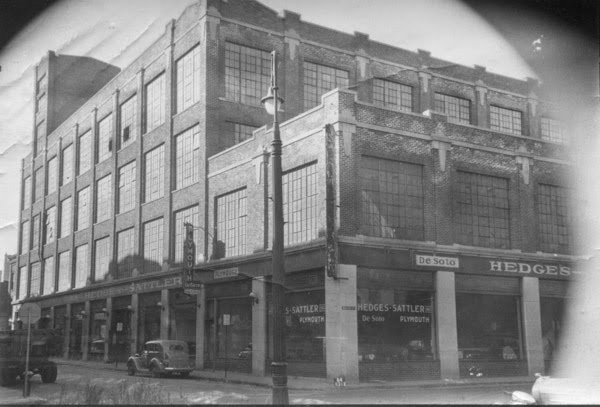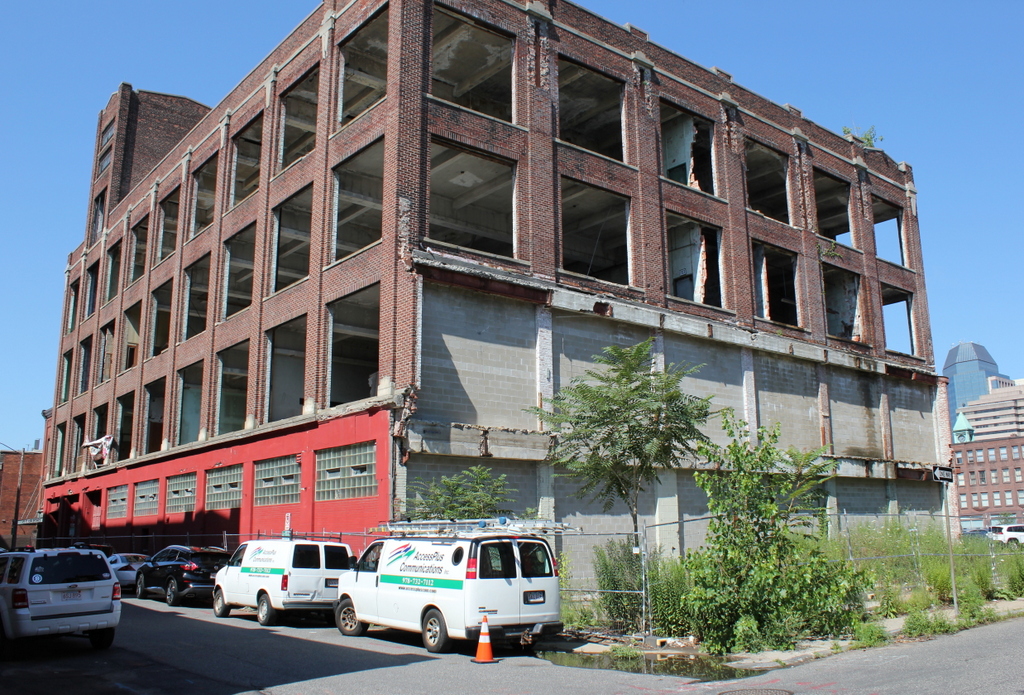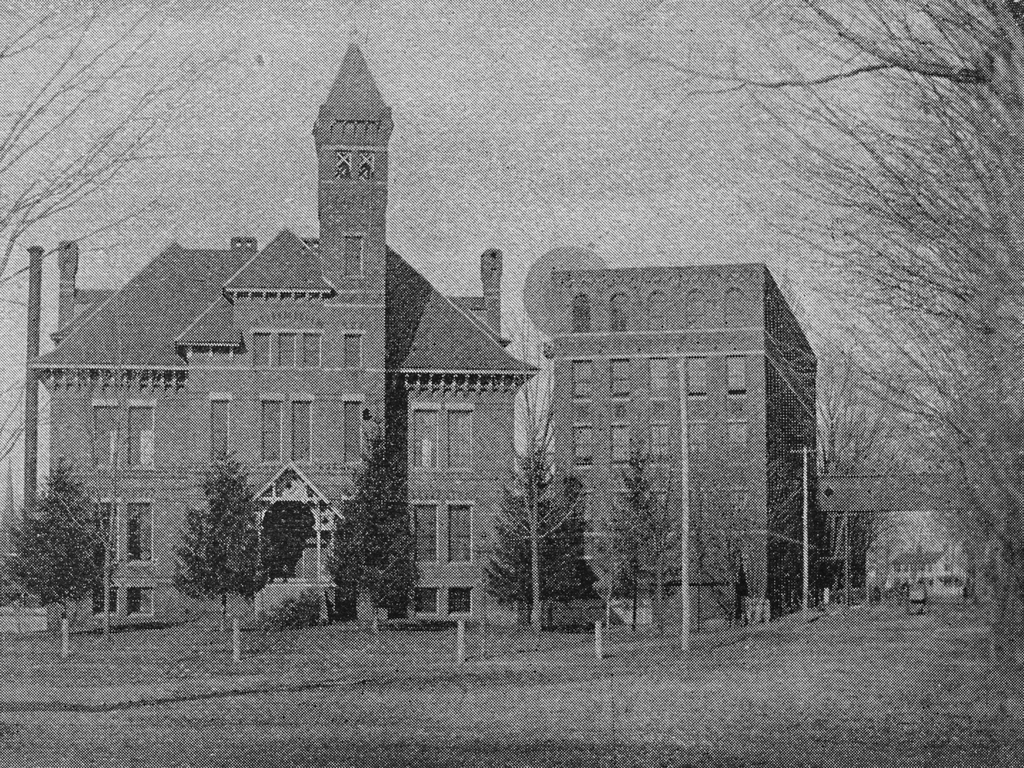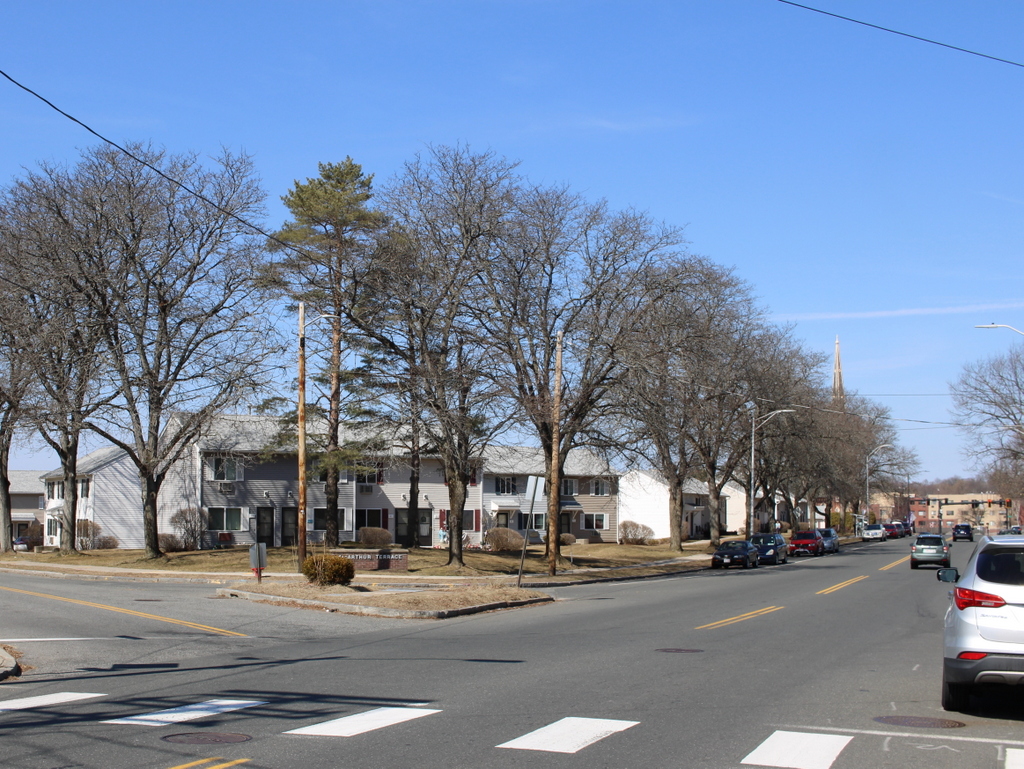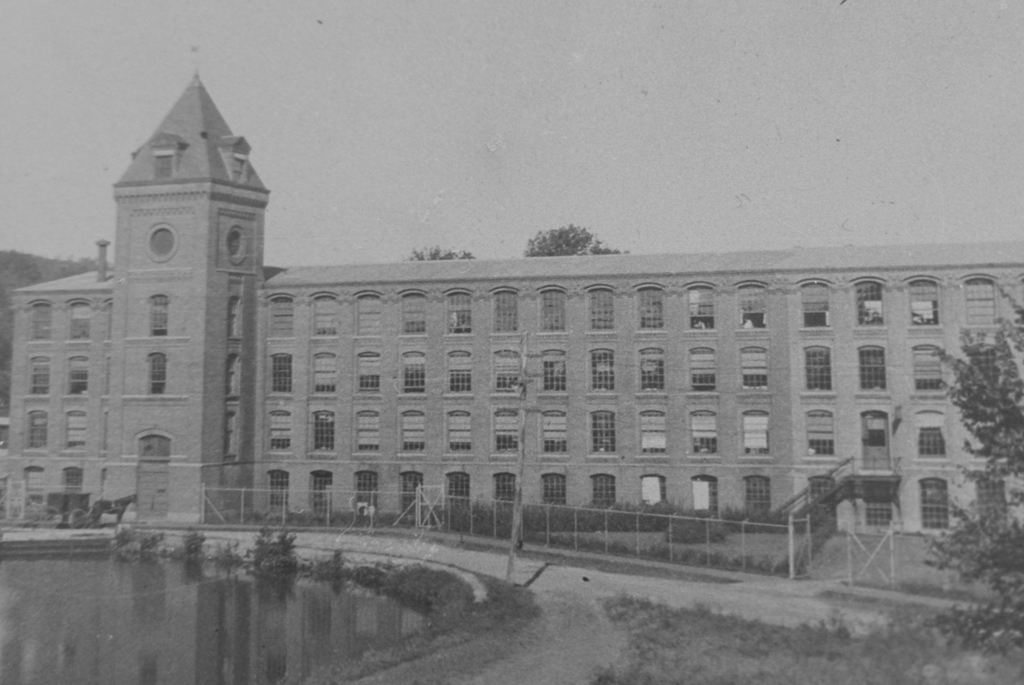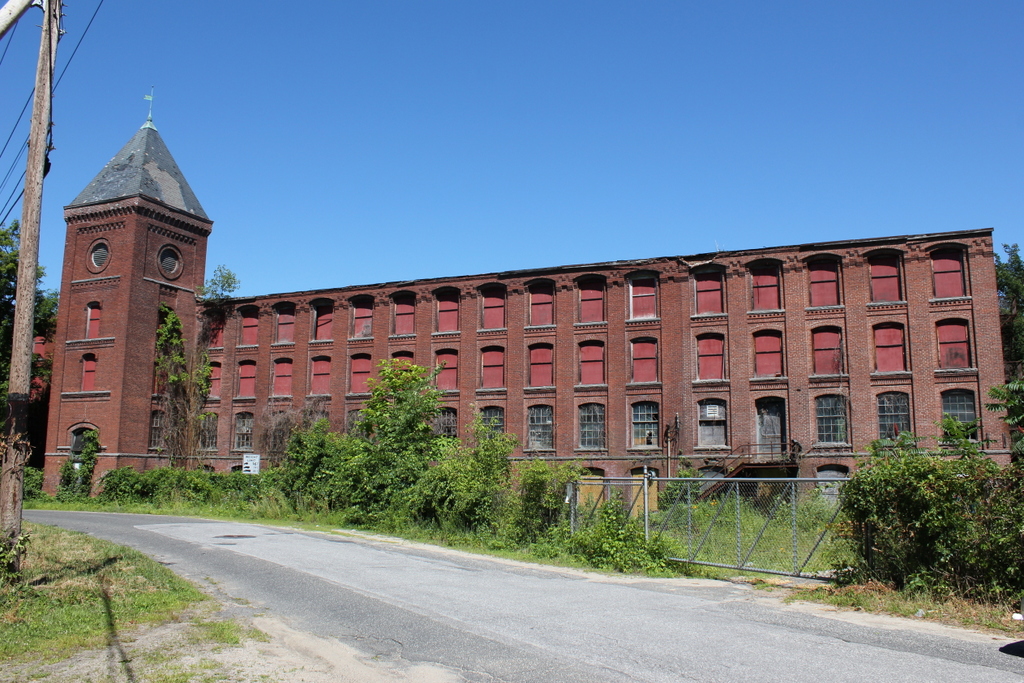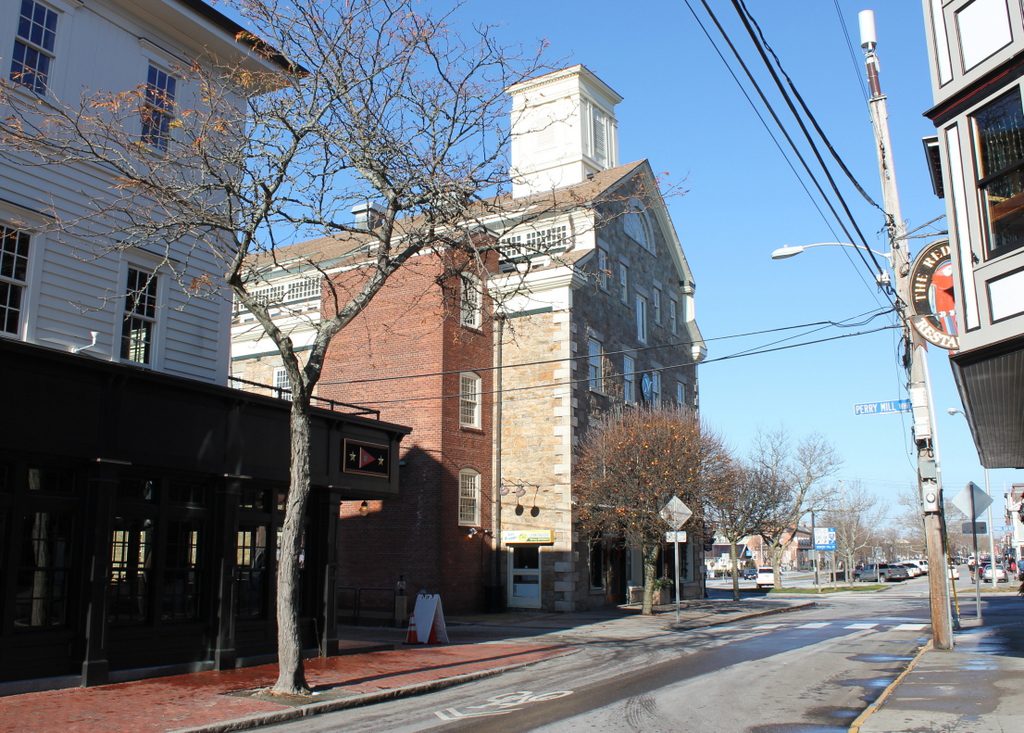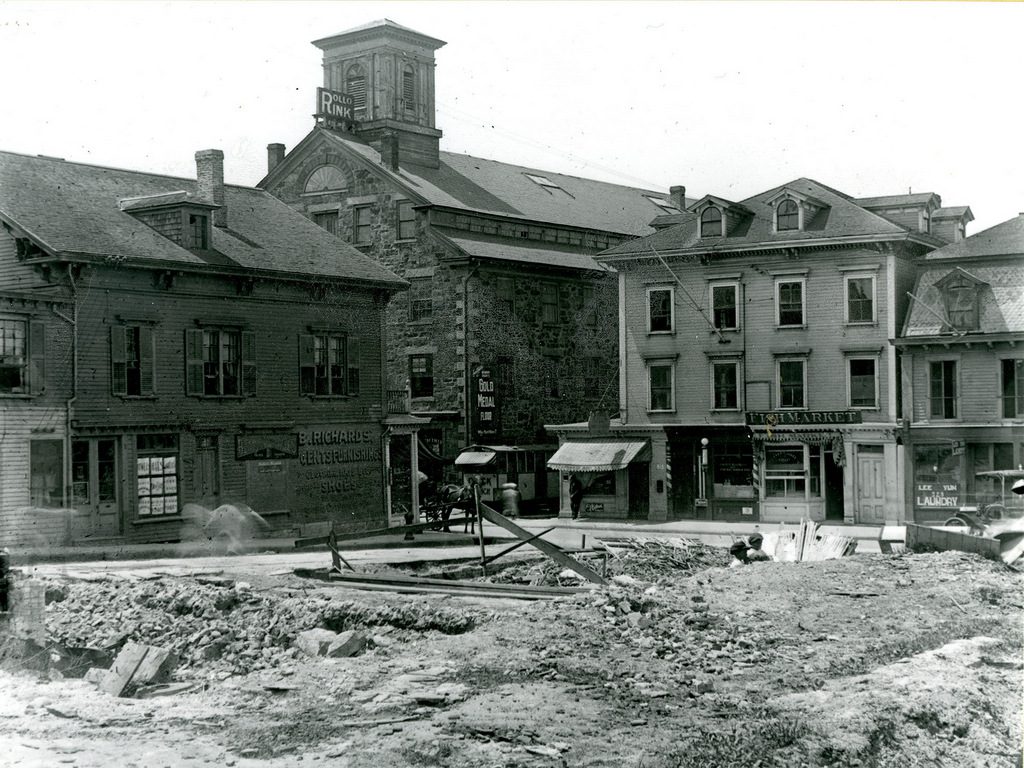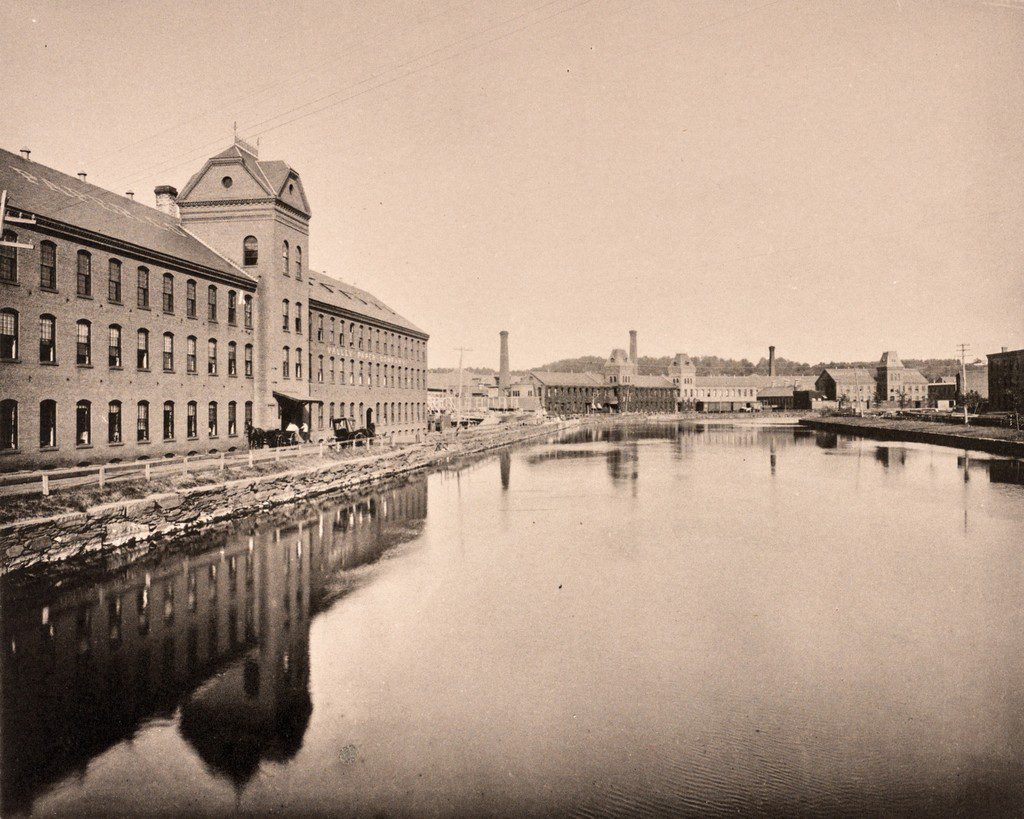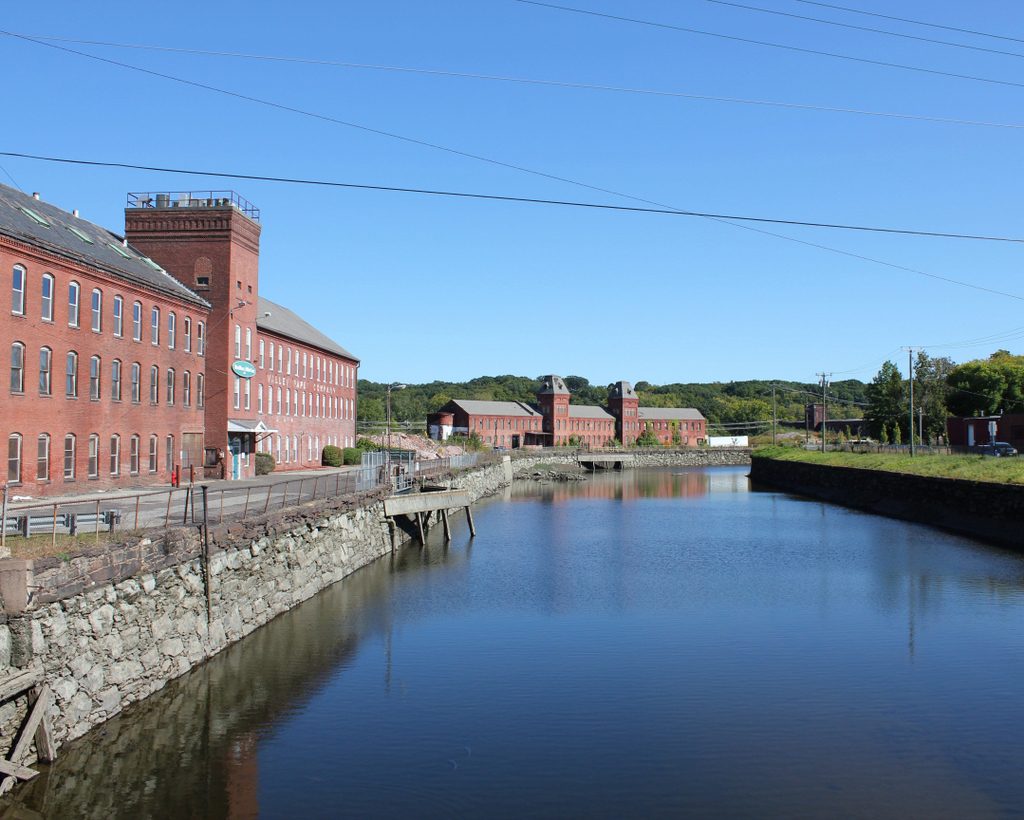The building at 14-38 Park Street in Springfield, around 1938-1939. Image courtesy of the Springfield Preservation Trust.
The building in 2018:
The Smith Carriage Company dated back to 1827, when David Smith established a carriage shop here on Park Street. This became a family business, with his son William joining in 1856 and eventually purchasing it from his father in 1873. None of the early buildings are still standing, but today the factory complex consists of three buildings from the late 19th and early 20th centuries. The oldest of these, a three-story brick building that stands just to the west of this one, was constructed around 1890. The other two, which are substantially larger, stand on opposite sides of Park Street. The one at 11-31 Park Street was built in 1916, and this one here at 14-38 Park Street in 1924.
The company was still known as the Smith Carriage Company when these two buildings were added, but by this point the name was vestigial. Carriagemaking had all but disappeared with the advent of automobiles in the early 20th century, but the company adapted and began focusing on manufacturing auto bodies. Smith Carriage was part of a prosperous automobile industry here in Springfield during this period, which also included the Knox Automobile Company and a Rolls-Royce factory.
As the first photo shows, during the late 1930s the ground floor of this building housed Hedges-Sattler, a car dealership that sold DeSoto and Plymouth cars. Smith Carriage was still located here at the time, but by the early 1940s it had shifted its focus from auto body production to repair. In 1942, the company sold its body-making machinery, and around the same time the first floor was converted into offices, after Hedges-Sattler relocated to a new site on Columbus Avenue. An advertisement in the city directory, published several years later, described the company’s work here as “automobile body repairing painting upholstering and glass – fleet work our specialty – custom built seat covers.” However, this change evidently did not help the company, because it was out of business by the end of the 1940s.
Today, some 80 years after the first photo was taken, the company’s three former buildings on Park Street are still standing, and they now form the Smith Carriage Company District on the National Register of Historic Places. The oldest of these, at 12 Park Street, is now a health clinic, and the 1916 building on the other side of Park Street was converted into 32 apartments in the early 1980s. However, the building in these two photos has been vacant for many years, and it sustained some damage in the 2011 tornado that passed through the South End. More recently, this property has become the site of a proposed hotel, given its proximity to the new MGM casino. Demolition work began a few years ago, with the removal of the windows and the razing of the two-story section in the foreground. However, the rest of the building is still standing as of early 2020, and the future of the property seems unclear at this point.

